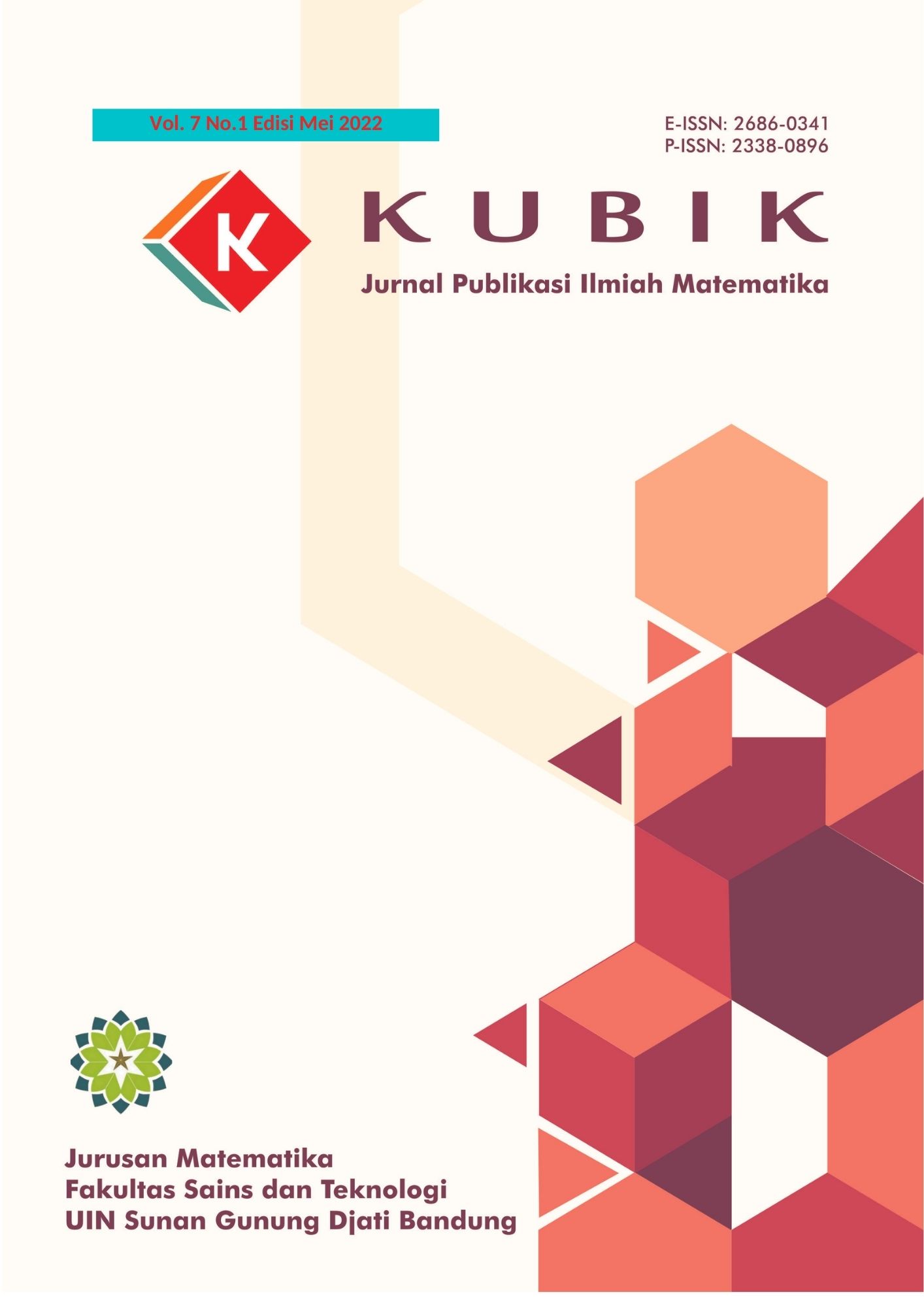Distribution Based Fuzzy Time Series Markov Chain Models for forecasting Inflation in Bandung
DOI:
https://doi.org/10.15575/kubik.v7i1.18156Keywords:
Fuzzy Time Series Markov Chain, Distribution Based Interval, MAPE, Inflation, Python.Abstract
This study discusses the application of the Fuzzy Time Series Markov Chain method which was developed by determining the length of the interval using the distribution method. In the fuzzy forecasting method, the determination of the length of the interval is an important thing that will affect the accuracy of the forecasting results. The development of this forecasting model aims to get better forecasting accuracy results. In this study, general inflation data for the city of Bandung is used for the period January 2016 – June 2021. The data is divided into two groups, namely in sample data and out sample data with a ratio of 90: 10. In the data processing process, the Python programming language is used. Based on the accuracy test using the MAPE method, it can be concluded that this method provides better forecasting results with a MAPE value of 1.16%.
References
S. Makridakis, S. C. Wheelwright, and V. E. McGee, “Metode dan aplikasi peramalan,†Jakarta: Erlangga, 1999.
D. Ruhiat and C. Suwanda, “Peramalan data deret waktu berpola musiman menggunakan metode regresi spektral (studi kasus: debit sungai citarum-nanjung),†Teorema Teor. dan Ris. Mat., vol. 4, no. 1, pp. 1–12, 2019.
M. Bose and K. Mali, “Designing fuzzy time series forecasting models: A survey,†Int. J. Approx. Reason., vol. 111, pp. 78–99, 2019.
Q. Song and B. S. Chissom, “Forecasting enrollments with fuzzy time series—Part II,†Fuzzy sets Syst., vol. 62, no. 1, pp. 1–8, 1994.
Y. Alyousifi, M. Othman, I. Faye, R. Sokkalingam, and P. C. L. Silva, “Markov weighted fuzzy time-series model based on an optimum partition method for forecasting air pollution,†Int. J. Fuzzy Syst., vol. 22, no. 5, pp. 1468–1486, 2020.
S. S. Gautam and S. R. Singh, “A refined method of forecasting based on high-order intuitionistic fuzzy time series data,†Prog. Artif. Intell., vol. 7, no. 4, pp. 339–350, 2018.
X. Sang, Q. Zhao, H. Lu, and J. Lu, “Weighted fuzzy time series forecasting based on improved fuzzy C-means clustering algorithm,†in 2018 IEEE International Conference on Progress in Informatics and Computing (PIC), 2018, pp. 80–84.
O. C. Yolcu and F. Alpaslan, “Prediction of TAIEX based on hybrid fuzzy time series model with single optimization process,†Appl. Soft Comput., vol. 66, pp. 18–33, 2018.
A. T. Salawudeen, M. B. Mu’azu, E. A. Adedokun, and B. A. Baba, “Optimal Determination of Hidden Markov Model Parameters for Fuzzy Time Series Forecasting,†Sci. African, p. e01174, 2022.
M. Pant, A. K. Shukla, and S. Kumar, “A novel method to optimize interval length for intuitionistic fuzzy time series,†in Soft Computing for Problem Solving, Springer, 2021, pp. 55–62.
R. M. Pattanayak, H. S. Behera, and S. Panigrahi, “A novel probabilistic intuitionistic fuzzy set based model for high order fuzzy time series forecasting,†Eng. Appl. Artif. Intell., vol. 99, p. 104136, 2021.
D. Febrian, D. Kartika, and D. A. J. Nainggolan, “Peramalan Jumlah Wisatawan Mancanegara Yang Datang Ke Sumatera Utara Dengan Fuzzy Time Series,†KUBIK J. Publ. Ilm. Mat., vol. 6, no. 1, pp. 13–23, 2021.
F. D. D. Hakimi, M. N. A. Anshori, and A. Hanif, “Peramalan Kecepatan Angin yang Direkam oleh Sistem AWS dengan Analisis Fuzzy Time Series,†J. Kubik, vol. 2, no. 2, 2017.
L. M. M. E. Un and M. T. Jatipaningrum, “Perbandingan Metode Fts-Chen Dan Fts-Markov Chain Untuk Memprediksi Curah Hujan Di Nusa Tenggara Timur,†J. Stat. Ind. dan Komputasi, vol. 4, no. 2, pp. 1–10, 2019.
R. A. Kafi, Y. R. Safitri, Y. Widyaningsih, and B. D. Handari, “Comparison of weighted Markov chain and fuzzy time series Markov chain in forecasting stock closing price of company X,†in AIP Conference Proceedings, 2019, vol. 2168, no. 1, p. 20033.
A. Aziz, K. N. I. Khomah, and S. P. Yohanes, “Prediction The Price of National Groceries Using Average Based Fuzzy Time Series With Song-Chissom and Markov Chain Approach,†in 2018 International Conference on Applied Information Technology and Innovation (ICAITI), 2018, pp. 129–134.
S. Hariyanto, Z. Zaenurrohman, and T. U. SRRM, “Average Based-FTS Markov Chain Based on a Modified Frequency Density Partitioning to Predict COVID-19 in Central Java,†CAUCHY, vol. 7, no. 2, pp. 231–239, 2022.
Downloads
Published
How to Cite
Issue
Section
Citation Check
License
Authors who publish in KUBIK: Jurnal Publikasi Ilmiah Matematika agree to the following terms:
- Authors retain copyright and grant the journal right of first publication with the work simultaneously licensed under a Attribution-ShareAlike 4.0 International (CC BY-SA 4.0) License that allows others to share the work with an acknowledgment of the work's authorship and initial publication in this journal.
- Authors are able to enter into separate, additional contractual arrangements for the non-exclusive distribution of the journal's published version of the work (e.g., post it to an institutional repository or publish it in a book), with an acknowledgment of its initial publication in this journal.
- Authors are permitted and encouraged to post their work online (e.g., in institutional repositories or on their website) prior to and during the submission process, as it can lead to productive exchanges, as well as earlier and greater citation of published work (See The Effect of Open Access).
Â









